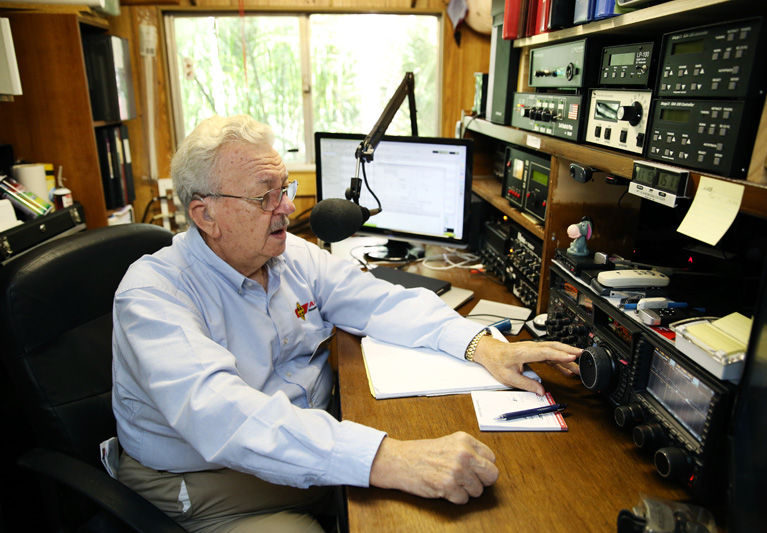
Do you understand the following sentence? “My Elmer got new QSLs printed; he sends them with a green stamp instead of an IRC.” If you do, it’s likely you are either an amateur radio operator or are close to someone who is.
Although more commonly referred to as “ham” radio, the original reference to the term is in dispute and lost to history. What is very much in the present is the popularity of ham radio as both a hobby and a service, with over two million operators in the world, nearly 700,000 in the United States, and over 400 in Indian River County.
Ham radio operators – hams for short – undoubtedly have fun, using the equipment in “Ham Shacks” to communicate with friends across town, across the country and across the world. But ham radios also provide an important communication system that stays up and running when others, such as landlines, cellphones and the internet, fail. It was ham radios that enabled New York City agencies to communicate with one another on 9/11.
Closer to home, ham radio operators assisted with life-saving communications during Hurricanes Frances and Jeanne in 2004 and Wilma in 2005. Craig Stewart, a long-time Vero Beach resident and a ham since the 1970s, vividly remembers the hurricane outages and is grateful that he and other hams were able to offer their services.
Members of the Vero Beach Amateur Radio Club (VBARC), founded in 1961, provide public safety communications for Indian River County’s Emergency Operation Center and work closely with the county’s America Red Cross Disaster Service. They have a dozen or so “Go Kits,” ready-to-go sets of equipment, which they can operate at shelters during a disaster.
VBARC members focus on preparedness through regular drills and ongoing training, and also keep their skills sharp by participating in local events, such as the annual Thanksgiving Day 5K Turkey Trot to benefit Harvest Food and Outreach Center. Stationed along the course, hams monitor activity, efficiently communicating news of any illnesses or injuries, or the number of runners still on the course.
The Ham Shack of member Dwight Baker, licensed since 1959, is filled with vintage as well as state-of-the art equipment.
“As a hobby, it has so many aspects,” says Baker. “You don’t even need to talk if you don’t want to. It’s fun to listen to conversations that could be taking place in England, or Italy, or anywhere in the world.”
Ham radio operators are required to pass an examination and become licensed by the Federal Communications Commission (FCC) in one of several license levels. New hams generally opt for the entry-level Technician license, which primarily allows local communication. Higher-level licenses allow additional privileges on designated groups of radio bands, and greater access to world-wide communications.
Ham radio has seen a resurgence in popularity, possibly due to the 2007 removal of the Morse code proficiency requirement for all license types. It is estimated that more than 100,000 people in the United States have become hams in the last four years,
The appeal is as varied as the operators themselves. Some are attracted by the notion of communicating with people from other countries and cultures. Some enjoy experimenting with older electronics or being on the cutting-edge of new digital technology. And for many, volunteering their skills and equipment to help their communities is very rewarding.
Back to that sample of the unique language of ham radio operators in the first paragraph – an Elmer is an experienced ham who helps new hams; QSLs are cards used to confirm that a ham made contact with another ham; a green stamp is a dollar bill sent with the QSL to offset postage costs of a return card; and an IRC is a coupon issued by postal systems to cover postage costs.
For more information, visit www.w4ot.webs.com.



